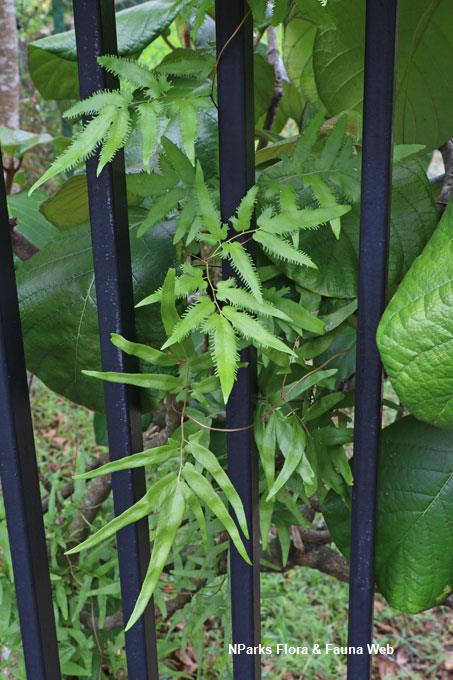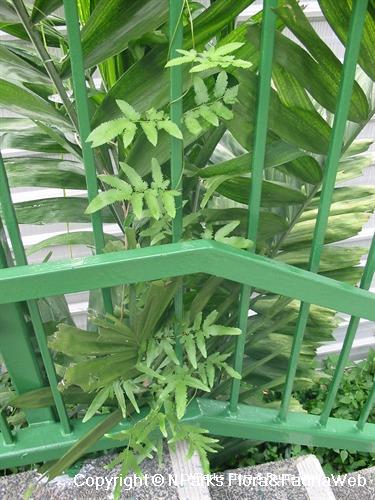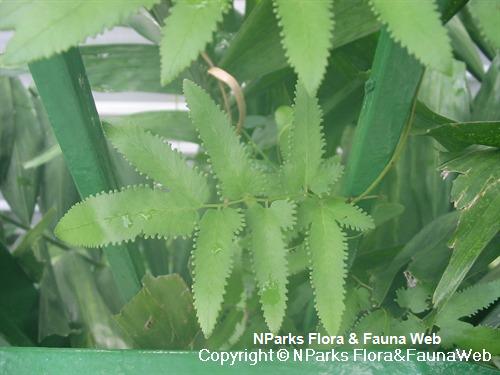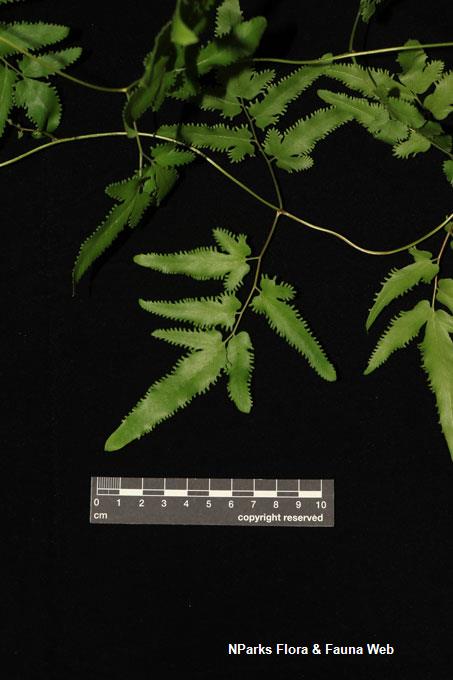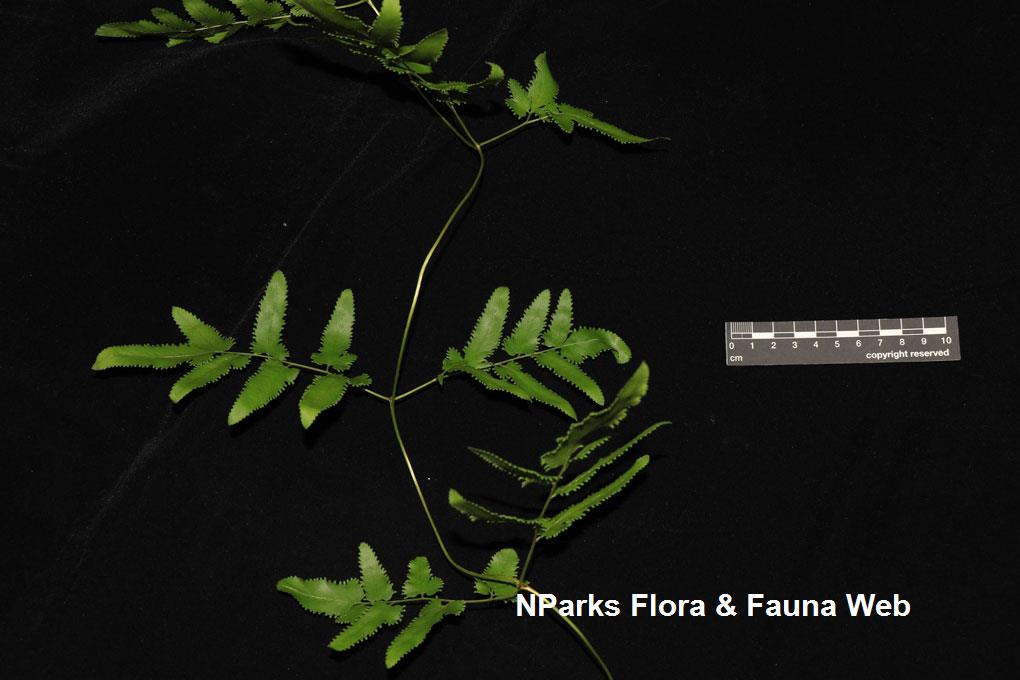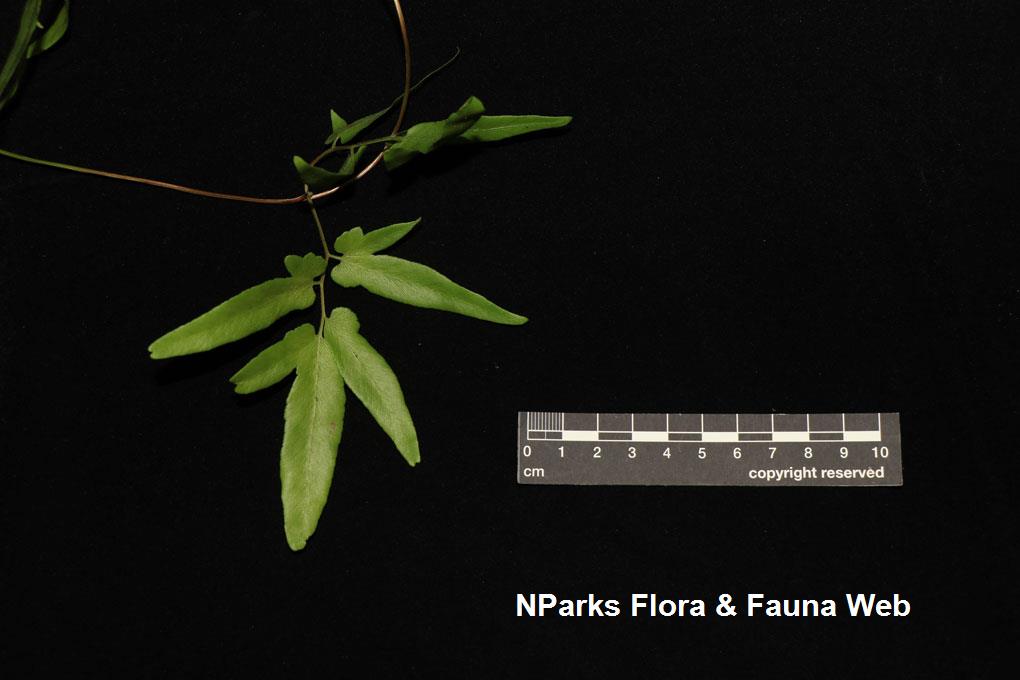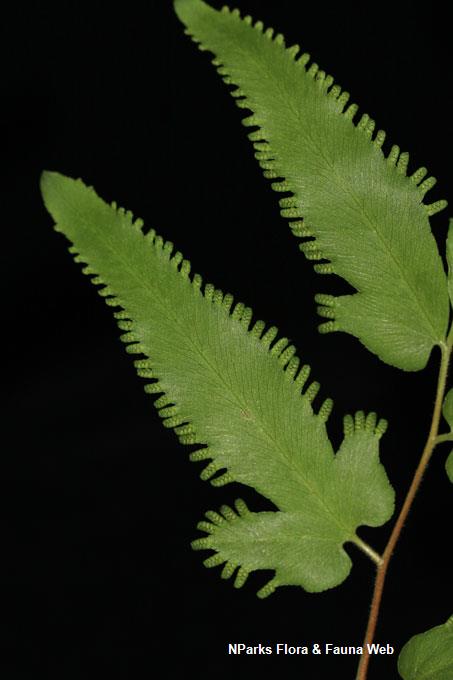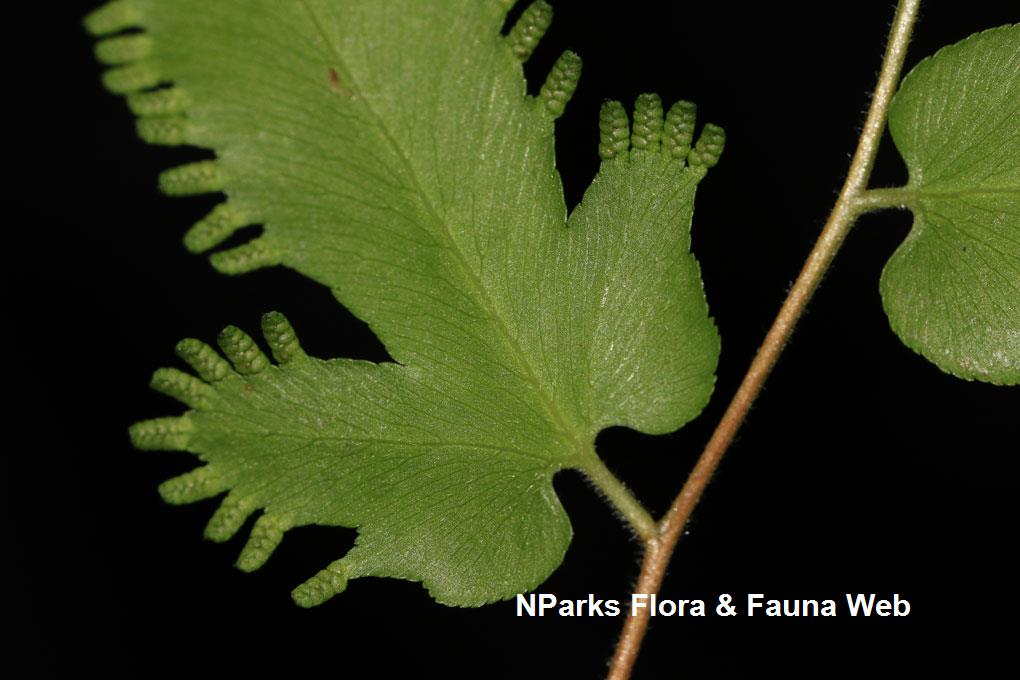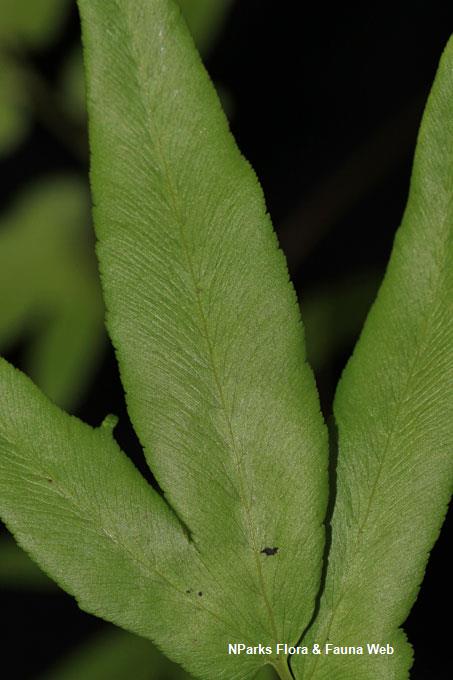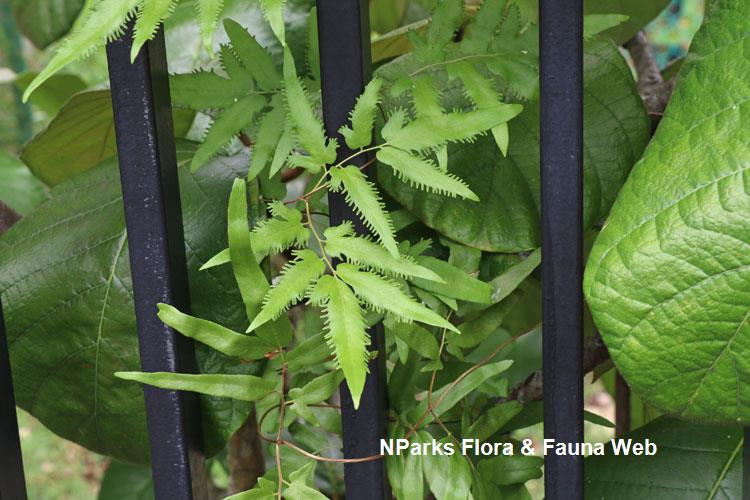
Back
Lygodium flexuosum (L.) Sw.
| Family Name: | Lygodiaceae |
| Common Name: | Ribu-ribu Gajah, Paku Ribu-ribu Gajah |
Lygodium flexuosum or Ribu-ribu Gajah is a climbing native fern in Singapore. This native has short-creeping rhizomes covered in brown to black hairs. The primary branch from the rhizome is very short up to 3 mm. The secondary branch is pinnate to bipinnate, holding trilobed, arrow-shaped to simple leaflets with toothed margins. The spore-bearing structures protrude along the margins of the lobes of the fertile fronds.
Name
Classifications and Characteristics
| Plant Division | Ferns & Lycophytes (Non-Seed Vascular Plants) (Fern) |
|---|---|
| Plant Growth Form | Herbaceous Plant |
| Lifespan (in Singapore) | Perennial |
| Mode of Nutrition | Autotrophic |
Biogeography
| Native Distribution | Sri Lanka, from Himalayas to Southern China, Ryukyu Islands, Hong Kong, South and South-east Melanesia (Vanuatu, New Caledonia) and Northern Queensland, Malaysia, Singapore. |
|---|---|
| Native Habitat | Terrestrial (Disturbed Area / Open Ground, Primary Rainforest, Secondary Rainforest) |
| Preferred Climate Zone | Sub-Tropical / Monsoonal, Tropical |
| Local Conservation Status | Native to Singapore (Least Concern (LC)) |
Description and Ethnobotany
| Growth Form | It is a terrestrial climbing fern with digitate fronds growing to several metres tall. |
|---|---|
| Foliage | Fronds are held on a long stipe, to 50 cm or more, narrowly winged on the upper part. The main rachis-branch is very short, up to 3 mm long covered in downy hairs. The secondary rachis-branch is pinnate to bipinnate, each leaflet is trilobed to arrow-shaped or simple with each lobe up to 15 cm long, 2.5 cm wide with toothed margins held on a winged, sparsely hairy stalk up to 1 cm long. The stalk may thicken at the attachment point of the blade. |
| Reproductive Parts - non-flowering plant | Spore-bearing lobes protrudes at the margin of the lobes, up to 10 mm long, 1.5 mm wide. |
| Others - Plant Morphology | The rhizomes are short-creeping, covered in dark brown to black hairs. |
| Habitat | Found climbing on shrubs or on branches of tall trees in open areas or in deciduous or mixed forest, fairly common at low or medium altitudes. <1,2> |
| Cultivation | It can be propagated by spores and rhizomes |
| Etymology | The genus, Lygodium translate to twining one in reference to the climbing habit of the fern. The species, flexuosum refers to the zigzag, winding rachis of the plant. |
Plant Care and Propagation
| Light Preference | Full Sun, Semi-Shade |
|---|---|
| Water Preference | Moderate Water |
| Plant Growth Rate | Fast to Moderate |
| Rootzone Tolerance | Moist Soils, Well-Drained Soils |
| Propagation Method | Spore |
Foliar
| Foliar Type | Compound (Bipinnate, Odd-Pinnate) |
|---|---|
| Foliar Shape(s) | |
| Foliar Venation | Pinnate / Net |
| Foliar Margin | Serrate / Toothed |
| Foliar Apex - Tip | Acute |
| Foliar Base | Cordate |
Non - Foliar and Storage
| Root Type | Underground (Fibrous Root) |
|---|---|
| Specialised Storage Organ(s) | Underground (Rhizome) |
References
| References | <1> Holttum, R.E. (1959). Lygodium. In: Holttum, R.E. (ed.). Schizaeaceae. Flora Malesiana. Ser. 2, Pteridophyta, vol. 1, pt. 1, pp. 53-54. Leiden: Rijksherbarium. <2> Holttum, R.E. (1979). Lygodium. Flora of Thailand. vol. 3(1), pp. 62-63. Bangkok: The Forest Herbarium, Department of National Parks, Wildlife and Plant Conservation. |
|---|
Image Repository
Others
| Master ID | 34310 |
|---|---|
| Species ID | 8723 |
| Flora Disclaimer | The information in this website has been compiled from reliable sources, such as reference works on medicinal plants. It is not a substitute for medical advice or treatment and NParks does not purport to provide any medical advice. Readers should always consult his/her physician before using or consuming a plant for medicinal purposes. |

